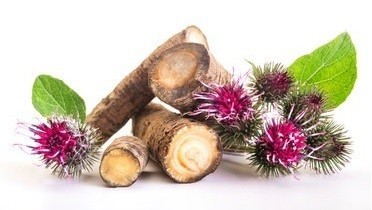Medicinal Asteraceae Tissue Culture
Asteraceae is the largest family of angiosperms, with the largest number of species, about 1,000 genera, and 25,000-30,000 species, and is widespread throughout the world, mainly in temperate and cold zones, but less in the tropics.

In addition to ornamental chrysanthemums, the family contains a large number of medicinal plant resources. The medicinal effects of chrysanthemums include anti-inflammatory, clearing heat, relieving symptoms, invigorating blood and dispelling silt, promoting water and permeating dampness, dispelling rheumatism, tonic deficiency, relieving pain, and relieving cough. The medicinal plants of Asteraceae not only have a large number of species and wide distribution but also have a complex chemical composition. The medicinal plants of Asteraceae contain almost all types of natural compounds, and there is a broad prospect of developing and utilizing the bioactive components of the medicinal plants of Asteraceae.
Tissue culture service
With their complex and diverse chemical composition, the medicinal plants of the Asteraceae family have an extremely wide range of applications in pharmaceuticals, nutraceuticals, cosmetics, and many other fields, and have great potential for research and development. Lifeasible has established a variety of stable tissue culture systems for medicinal Asteraceae.
Some Lifeasible have established stable tissue culture systems of medicinal Asteraceae
| Family |
Genus |
Species |
| Asteraceae |
Taraxacum |
Taraxacum mongolicum Hand. -Mazz |
| Senecio |
Senecio scandens Buch. -Ham |
| Arctium |
Arctium lappa L. |
| Artemisia |
Artemisia annua L. |
| Artemisia capillaries Thunb. |
| Artemisiaargyi |
| Aster |
Aster tataricus L. f. |
| Stemmacantha |
Stemmacantha uniflora (L.) Dittrich |
| Cirsium |
Cirsium setosum (Willd.) MB |
| Centipeda |
Centipeda minima |
| Cynara |
Cynara scolymus |
| Ageratum |
Ageratum conyzoides L. |
| Silybum |
Silybum marianum L. Gaertn. |
| Chrysanthemum |
Chrysanthemum indicum |
| Chrysanthemum × morifolium |
| Eclipta |
Eclipta prostrata (L.) L. |
| Inula |
Inula japonica Thunb. |
| Kalimeris |
Kalimeris indica |
| Xanthium |
Xanthium strumarium Patrin ex Widder |
| Atractylodes |
Atractylodes chinensis (DC.) Koidz. |
| Atractylodes macrocephala Koidz. |
| Carthamus |
Carthamus tinctorius L. |
| Solidago |
Solidago decurrens Lour. |
| Tussilago |
Tussilago farfara L. |
| Cichorium |
Cichorium intybus L. |
* The list of species that can be tissue cultured is constantly being updated, so please stay tuned.
Lifeasible has successfully achieved shoot induction, proliferation, and rooting culture of medicinal chrysanthemum by using young stems, inflorescences, buds, and leaves of chrysanthemum as explants and inducing healing tissues and differentiated seedlings on culture media respectively, and the short time of in vitro culture proliferation is 5-6 times, and the rooting rate is over 90%.
The use of growth hormone in combination with cytokinin is necessary for the morphological establishment of tissue culture seedlings of medicinal chrysanthemums. The addition of 6-BA, KT, and ZT can promote the differentiation of adventitious buds and help the growth of axillary buds, which can be used for the proliferation of stems.
You want to sign a confidentiality agreement.
You have a specific plant species for your experimental needs.
You have a reliable and relevant cooperation project to discuss.
You are very interested in our project or have any questions.
You need an updated and detailed quotation.
For research or industrial use.



